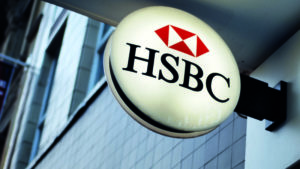UK headline inflation for March fell to 3.2% from 3.4% in February, according to the Consumer Price Index, published by the Office for National Statistics today (17 April).
The decrease in inflation, which came in above the consensus forecast of 3.1%, was slowed by an increase in the price of fuel and services, as well as stickier-than-expected wage data.
Core inflation also fell by 30 basis points, from 4.5% in February to 4.2% last month.
See also: Eurozone inflation tempers to 2.4% for March
Zara Nokes, global market analyst at JP Morgan Asset Management, said wages and services inflation could point to “signs of deeper inflation persistence”.
“The 10% increase in the National Living Wage introduced on 1 April may lead to a broader firming in wage growth across the economy and will be a key watch item for the Bank [of England] over the next few months,” she warned. “While the Bank should feel able to take its foot off the brake this summer given considerable progress has been made on inflation at the headline level, if these signs of deeper persistence continue, the pace of further rate cuts may be slow and the magnitude limited.”
David McCreadie, CEO of Secure Trust Bank, added there is now a “growing speculation that the central bank may consider easing monetary policy during the summer”. However, he pointed out the latest labour market data released on Tuesday “presented a mixed picture”.
“The unemployment rate rose to 4.2% in the three months to February, up from 3.9% in the previous quarter, indicating ongoing challenges in the job market. Conversely, wage growth surpassed expectations, reaching 5.6%, which could have implications for future inflationary trends.
“These divergent signals pose a dilemma for BoE policymakers, who must navigate the delicate balance between supporting employment and managing inflationary pressures.”
See also: Will bumpy inflation figures defer the interest rate cuts markets hope for?
Lindsay James, investment strategist at Quilter Investors, said the latest set of data will be “reassuring” to the BoE and “leaves rate cuts on the table in the near term”.
“Last month saw a slightly faster than expected decline which initially drove gilt yields lower, however since then we have seen continued signs of a strong US economy along with higher than expected US CPI – which has pushed back expectations of rate cuts in the US and in the UK too, with the markets expectation that the BoE will be reluctant to move in a different direction from the Federal Reserve, due to the risk of devaluing the pound and hence triggering a further inflationary pulse,” she explained.
“This effect has seen the market price in less than two rate cuts in the UK by year end, approximately one fewer than a month ago despite the improving inflation data. This latest inflation number may question this as the government heads into the election banking on interest rate cuts feeding through to the real economy.”







